
LOADING ...
In response to evolving domestic opinion, eMedals Inc has made the conscious decision to remove the presentation of German Third Reich historical artifacts from our online catalogue. For three decades, eMedals Inc has made an effort to preserve history in all its forms. As historians and researchers, we have managed sensitive articles and materials with the greatest of care and respect for their past and present social context. We acknowledge the growing sentiments put forth by the Canadian public and have taken proactive actions to address this opinion.
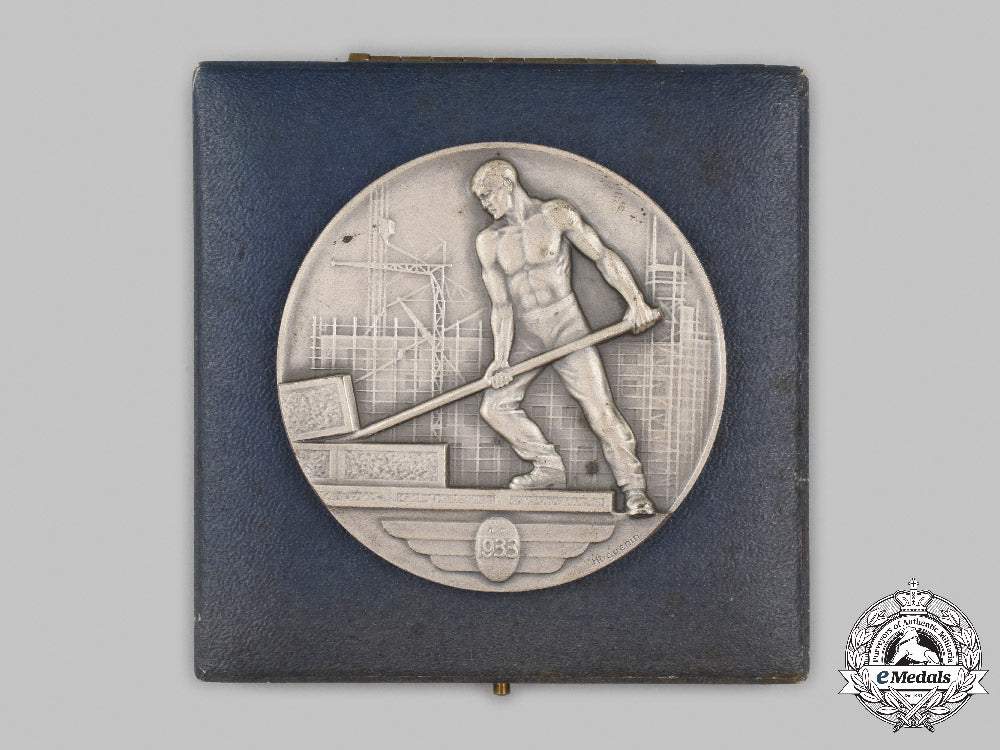
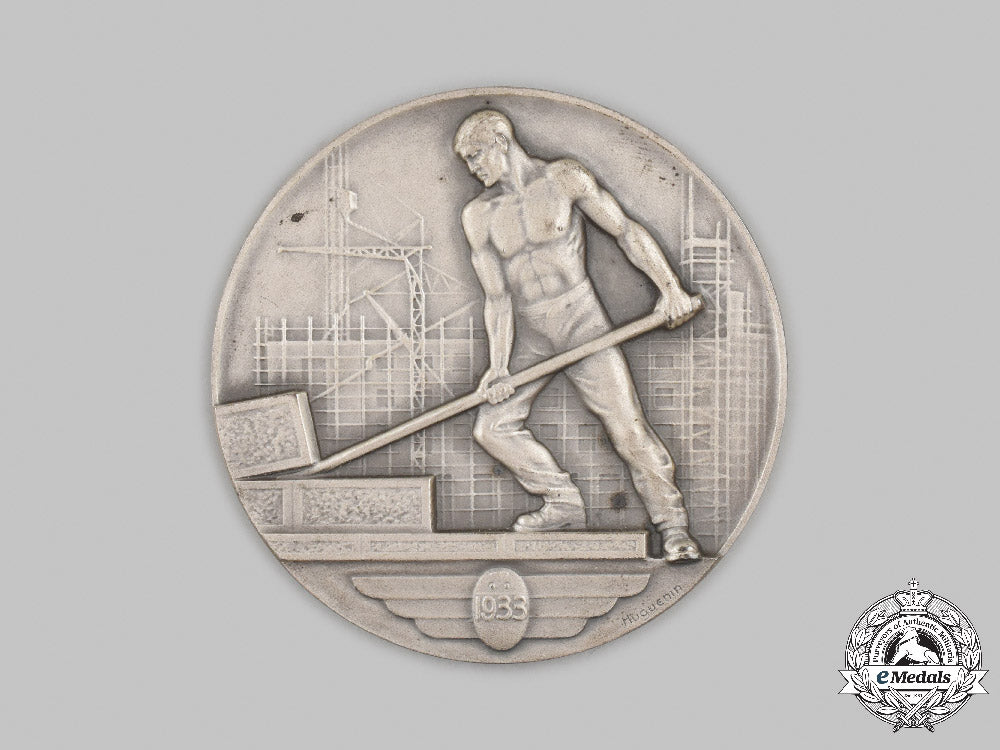
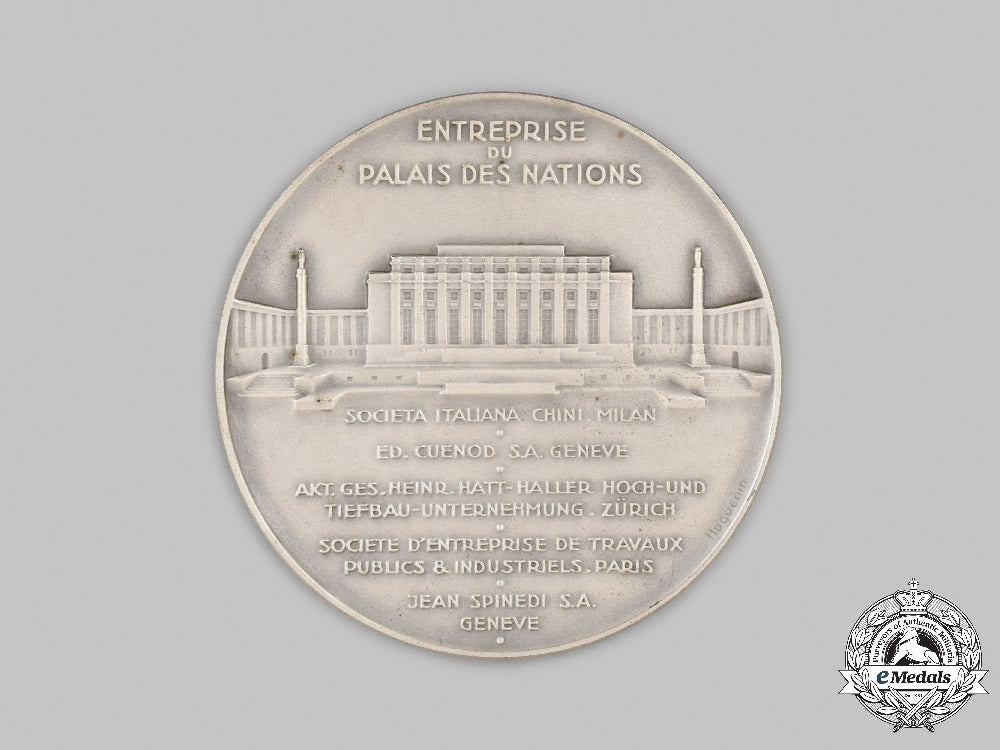
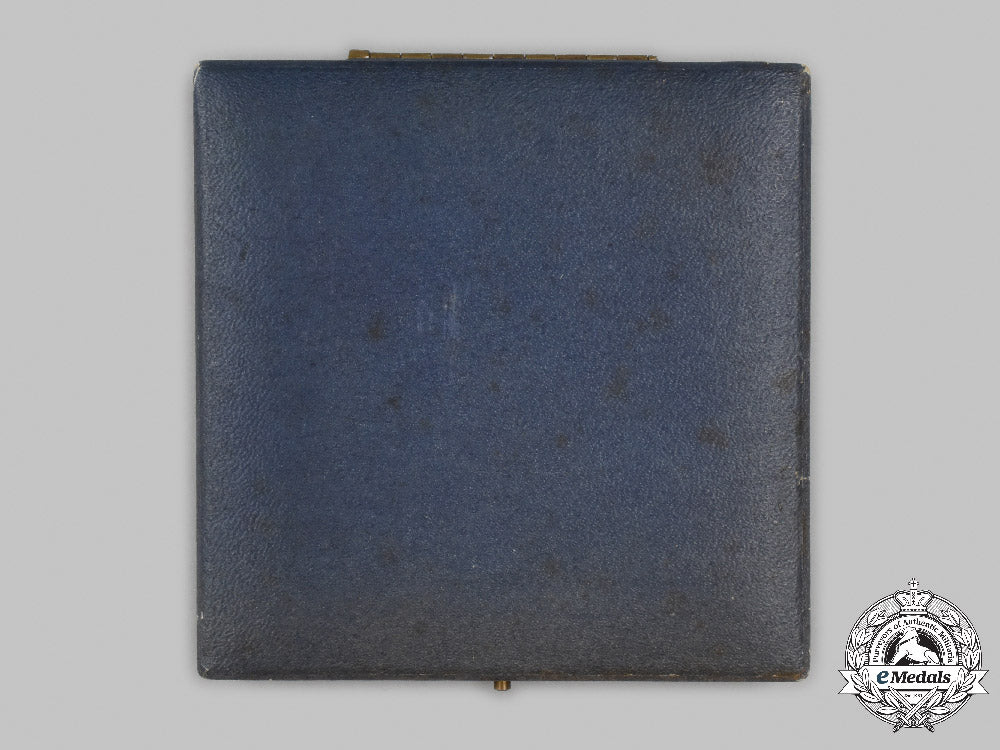
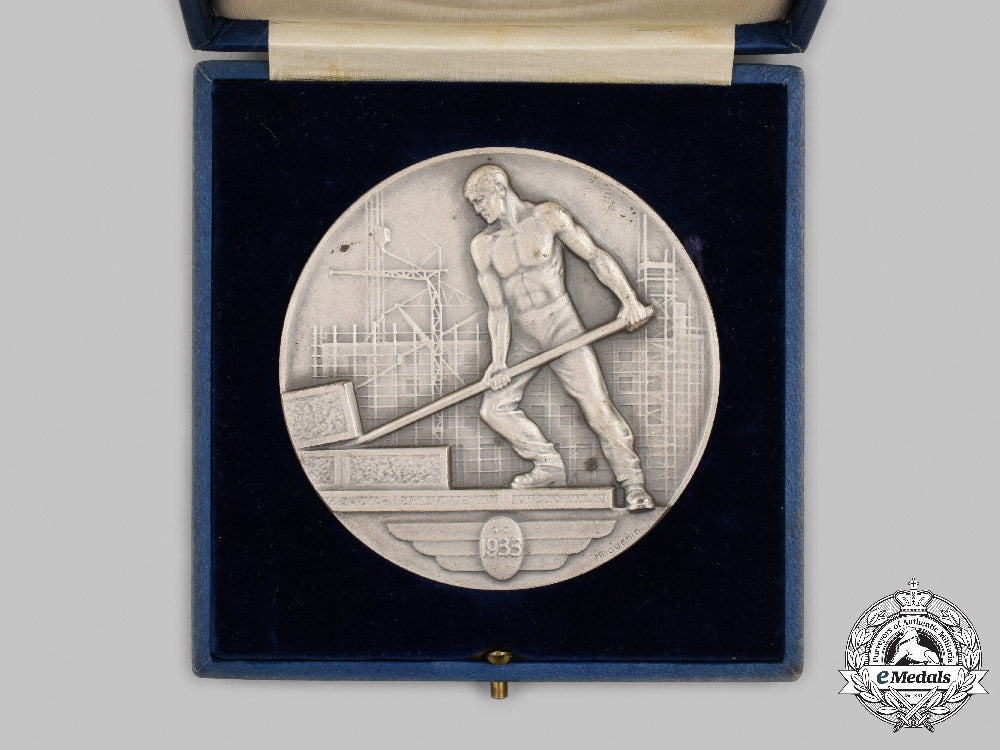
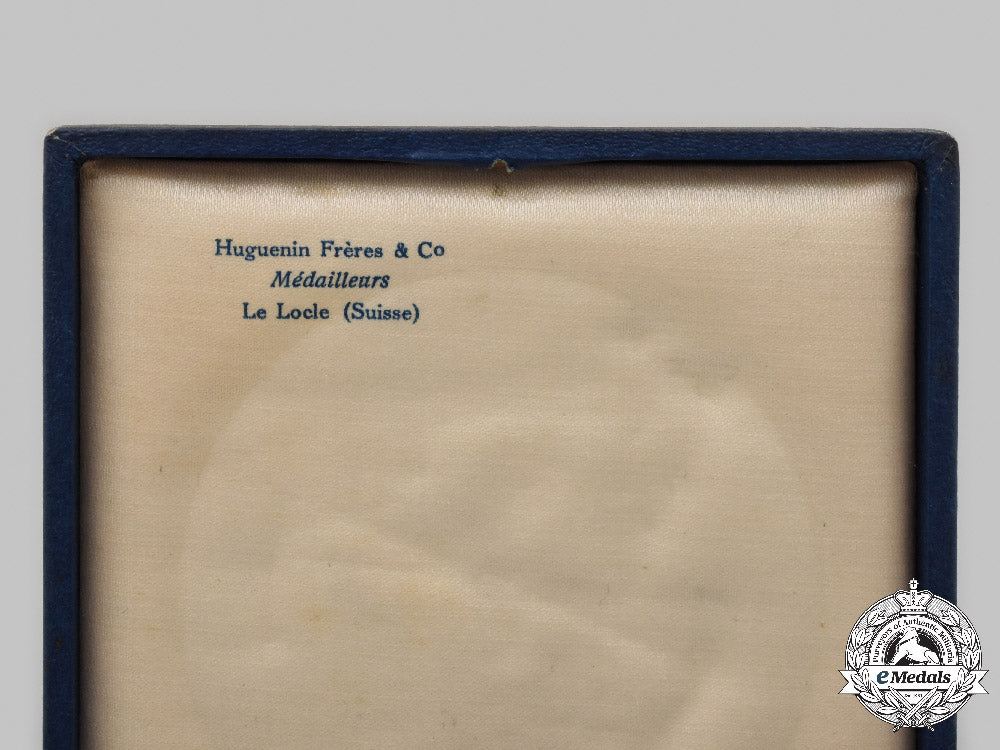
Switzerland, Swiss Confederation. A Palace Of Nations Table Medal 1933
Switzerland, Swiss Confederation. A Palace Of Nations Table Medal 1933
SKU: ITEM: EU19327
Current Bid:
Your Max Bid:
Bid History:
Time Remaining:
Couldn't load pickup availability
Shipping Details
Shipping Details
eMedals offers rapid domestic and international shipping. Orders received prior to 12:00pm (EST) will be shipped on the same business day.* Orders placed on Canadian Federal holidays will be dispatched the subsequent business day. Courier tracking numbers are provided for all shipments. All items purchased from eMedals can be returned for a full monetary refund or merchandise credit, providing the criteria presented in our Terms & Conditions are met. *Please note that the addition of a COA may impact dispatch time.
Shipping Details
eMedals offers rapid domestic and international shipping. Orders received prior to 12:00pm (EST) will be shipped on the same business day.* Orders placed on Canadian Federal holidays will be dispatched the subsequent business day. Courier tracking numbers are provided for all shipments. All items purchased from eMedals can be returned for a full monetary refund or merchandise credit, providing the criteria presented in our Terms & Conditions are met. *Please note that the addition of a COA may impact dispatch time.
Description
Description
In silver, marked "0.900" (silver) on the edge, weighing 149 grams, obverse illustrating a shirtless construction worker, wearing pants and work boots, holding a lever and lifting up a block with it, the block placed upon two other blocks at the left, the skeleton framework of a building under construction in the distance, with a crane visible at the left, an oval disk at the base dated "1933" and engraver marked "Huguenin", reverse illustrating the Palace of Nations (built as the headquarters of the League of Nations, later, home of the United Nations Office, at Geneva, Switzerland), with the inscription "ENTREPRISE DU PALAIS DES NATIONS / SOCIETA ITALIANA CHINI . MILAN / ED. CUENOD S.A. GENEVA / AKT. GES. HEINR. HATT-HALLER HOCH-UND TIEFBAU-UNTERNEHMUNG . ZÜRICH / SOCIETE D'ENTREPRISE DE TRAVAUX PUBLICS & INDUSTRIELS . PARIS / JEAN SPINEDI S.A. GENEVE" and engraver marked "Huguenin", measuring 70.8 mm in diameter, exhibiting spotting on the obverse. Near extremely fine. In its hardshelled case of issue, maker marked "Huguenin Frères & Co Médailleurs Le Locle (Suisse)" on the white satiny inside lid, navy blue felt recessed medal bed, measuring 98.7 mm (w) x 99.8 mm (h) x 18.7 mm (d), exhibiting light wear and sunning on the exterior, case better than very fine.
Footnote: The Palace of Nations is the home of the United Nations Office at Geneva, located in Geneva, Switzerland. It was built between 1929 and 1938 to serve as the headquarters of the League of Nations. It has served as the home of the United Nations Office at Geneva since 1946 when the Secretary-General of the United Nations signed a Headquarters Agreement with the Swiss authorities, although Switzerland did not become a member of the United Nations until 2002. An architectural competition held in the 1920s to choose a design for the complex described the project as follows: "The Palace, whose construction is the object of the competition, is intended to house all the organs of the League of Nations in Geneva. It should be designed in such a way as to allow these organs to work, to preside and to hold discussions, independently and easily in the calm atmosphere which should prevail when dealing with problems of an international dimension." A jury of architects was selected to choose a final design from among 377 entries but was unable to decide on a winner. Ultimately, the five architects behind the leading entries were chosen to collaborate on a final design: Julien Flegenheimer of Switzerland, Camille Lefèvre and Henri-Paul Nénot of France, Carlo Broggi of Italy and József Vágó of Hungary. Donations from League members were used in the interior. The Palace constituted at the time of completion in 1936, volume wise, the second-largest building complex in Europe after Versailles (440,000 m3 (15,500,000 cu ft) vs. 460,000 m3 (16,200,000 cu ft). After its transfer to the United Nations, two extensions were added to the building, which considerably increased the size of the usable area of the building. Between 1950 and 1952, three floors were added to the "K" building, and the "D" building was constructed to temporarily house the World Health Organization. The "E" building (or "New" Building) was added between 1968 and 1973 as a conference facility (an additional eleven conference rooms and an extra volume of 380,000 m3 (13,400,000 cu ft)), bringing the total of conference rooms to 34. With the additions, the complex is 600 metres (2,000 ft) long and holds 2,800 offices, with a total volume of 853,000 m3 (30,100,000 cu ft).
Description
In silver, marked "0.900" (silver) on the edge, weighing 149 grams, obverse illustrating a shirtless construction worker, wearing pants and work boots, holding a lever and lifting up a block with it, the block placed upon two other blocks at the left, the skeleton framework of a building under construction in the distance, with a crane visible at the left, an oval disk at the base dated "1933" and engraver marked "Huguenin", reverse illustrating the Palace of Nations (built as the headquarters of the League of Nations, later, home of the United Nations Office, at Geneva, Switzerland), with the inscription "ENTREPRISE DU PALAIS DES NATIONS / SOCIETA ITALIANA CHINI . MILAN / ED. CUENOD S.A. GENEVA / AKT. GES. HEINR. HATT-HALLER HOCH-UND TIEFBAU-UNTERNEHMUNG . ZÜRICH / SOCIETE D'ENTREPRISE DE TRAVAUX PUBLICS & INDUSTRIELS . PARIS / JEAN SPINEDI S.A. GENEVE" and engraver marked "Huguenin", measuring 70.8 mm in diameter, exhibiting spotting on the obverse. Near extremely fine. In its hardshelled case of issue, maker marked "Huguenin Frères & Co Médailleurs Le Locle (Suisse)" on the white satiny inside lid, navy blue felt recessed medal bed, measuring 98.7 mm (w) x 99.8 mm (h) x 18.7 mm (d), exhibiting light wear and sunning on the exterior, case better than very fine.
Footnote: The Palace of Nations is the home of the United Nations Office at Geneva, located in Geneva, Switzerland. It was built between 1929 and 1938 to serve as the headquarters of the League of Nations. It has served as the home of the United Nations Office at Geneva since 1946 when the Secretary-General of the United Nations signed a Headquarters Agreement with the Swiss authorities, although Switzerland did not become a member of the United Nations until 2002. An architectural competition held in the 1920s to choose a design for the complex described the project as follows: "The Palace, whose construction is the object of the competition, is intended to house all the organs of the League of Nations in Geneva. It should be designed in such a way as to allow these organs to work, to preside and to hold discussions, independently and easily in the calm atmosphere which should prevail when dealing with problems of an international dimension." A jury of architects was selected to choose a final design from among 377 entries but was unable to decide on a winner. Ultimately, the five architects behind the leading entries were chosen to collaborate on a final design: Julien Flegenheimer of Switzerland, Camille Lefèvre and Henri-Paul Nénot of France, Carlo Broggi of Italy and József Vágó of Hungary. Donations from League members were used in the interior. The Palace constituted at the time of completion in 1936, volume wise, the second-largest building complex in Europe after Versailles (440,000 m3 (15,500,000 cu ft) vs. 460,000 m3 (16,200,000 cu ft). After its transfer to the United Nations, two extensions were added to the building, which considerably increased the size of the usable area of the building. Between 1950 and 1952, three floors were added to the "K" building, and the "D" building was constructed to temporarily house the World Health Organization. The "E" building (or "New" Building) was added between 1968 and 1973 as a conference facility (an additional eleven conference rooms and an extra volume of 380,000 m3 (13,400,000 cu ft)), bringing the total of conference rooms to 34. With the additions, the complex is 600 metres (2,000 ft) long and holds 2,800 offices, with a total volume of 853,000 m3 (30,100,000 cu ft).





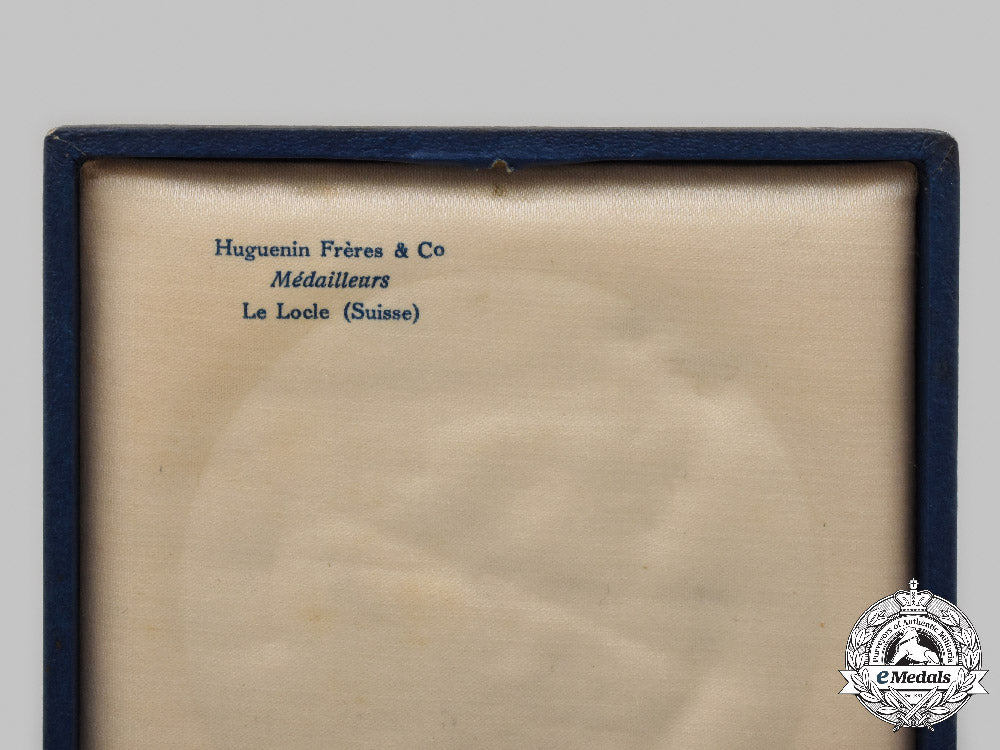
You May Also Like
Germany, HJ. A 1938 National Trade Competition Victor’s Badge, Gold Grade in Case, By Gustav Brehmer
G60096
Italy, Republic. An Order of Merit of the Italian Republic, Grand Cross Set by Johnson, 1970
EU23677
Spain, Franco Period. An Order of Civil Merit, Grand Cross Set
EU23731
Russia, Imperial. An Order of St. Anne, II Class in Gold
EU23720
Austria, Imperial. An Order of the Iron Crown, III Class in Gold, by Rothe, c.1900
EU23723
-
Germany, HJ. A 1938 National Trade Competition Victor’s Badge, Gold Grade in Case, By Gustav Brehmer
G60096
Add to CartRegular price $3,950 USDRegular price $0 USD Sale price $3,950 USDUnit price / per -
Italy, Republic. An Order of Merit of the Italian Republic, Grand Cross Set by Johnson, 1970
EU23677
Add to CartRegular price $950 USDRegular price $0 USD Sale price $950 USDUnit price / per -
Spain, Franco Period. An Order of Civil Merit, Grand Cross Set
EU23731
Add to CartRegular price $600 USDRegular price $0 USD Sale price $600 USDUnit price / per -
Russia, Imperial. An Order of St. Anne, II Class in Gold
EU23720
Add to CartRegular price $2,950 USDRegular price $0 USD Sale price $2,950 USDUnit price / per -
Austria, Imperial. An Order of the Iron Crown, III Class in Gold, by Rothe, c.1900
EU23723
Add to CartRegular price $3,950 USDRegular price $0 USD Sale price $3,950 USDUnit price / per
Do you have a similar item you are interested in selling?
Please complete the form and our client care representatives will contact you.
Sell Item
















